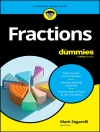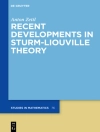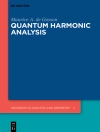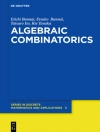Topics covered in this volume (large deviations, differential geometry, asymptotic expansions, central limit theorems) give a full picture of the current advances in the application of asymptotic methods in mathematical finance, and thereby provide rigorous solutions to important mathematical and financial issues, such as implied volatility asymptotics, local volatility extrapolation, systemic risk and volatility estimation. This volume gathers together ground-breaking results in this field by some of its leading experts.
Over the past decade, asymptotic methods have played an increasingly important role in the study of the behaviour of (financial) models. These methods provide a useful alternative to numerical methods in settings where the latter may lose accuracy (in extremes such as small and large strikes, and small maturities), and lead to a clearer understanding of the behaviour of models, and of the influence of parameters on this behaviour.
Graduate students, researchers and practitioners will find this book very useful, and the diversity of topics will appeal to people from mathematical finance, probability theory and differential geometry.
Содержание
Hagan, Lesniewski, Woodward: Probability Distribution in the SABR Model of Stochastic Volatility.- Paulot: Asymptotic Implied Volatility at the Second Order with Application to the SABR Model.- Henry-Labordere: Unifying the BGM and SABR Models: A Short Ride in Hyperbolic Geometry.- Ben Arous, Laurence: Second Order Expansion for Implied Volatility in Two Factor Local-stochastic Volatility.- Osajima: General Asymptotics of Wiener Functionals and Application to Implied Volatilities.- Bayer, Laurence: Small-time asymptotics for the at-the-money implied volatility in a multi-dimensional local volatility model.- Keller-Ressel, Teichmann: A Remark on Gatheral’s ‘Most-likely Path Approximation’ of Implied Volatility.- Gatheral, Wang: Implied volatility from local volatility: a path integral approach.- Gerhold, Friz: Don’t Stay Local — Extrapolation Analytics for Dupire’s Local Volatility.- Gulisashvili, Teichmann: Laplace Principle Expansions and Short Time Asymptotics for Affine Processes.- Lorig, Pascucci, Pagliarani: Asymptotics for d-dimensional Levy-type Processes.- Takahashi: An Asymptotic Expansion Approach in Finance.- Baudoin, Ouyang: On small time asymptotics for rough differential equations driven by fractional Brownian motions.- Lucic: On singularities in the Heston model.- Bayer, Friz, Laurence: On the probability density function of baskets.- Conforti, De Marco, Deuschel: On small-noise equations with degenerate limiting system arising from volatility models.- Pham: Long time asymptotic problems for optimal investment.- Spiliopoulos: Systemic Risk and Default Clustering for Large Financial Systems.- Jacod, Rosenbaum: Asymptotic Properties of a Volatility Estimator.
Об авторе
Peter K. Friz is presently full professor at TU and WIAS Berlin. After studies in Vienna, Paris and Trinity College, Cambridge, he obtained his Ph D under the supervision of S.R.S. Varadhan at the Courant Institute of New York University. In 2003-04 he worked for Merrill Lynch, New York, before returning to academia where he then held a Readership at Cambridge University until his move to Berlin in 2009. PKF has written numerous papers in the broad area of quantitative finance, partial differential equations, stochastic analysis and two highly regarded books on applications of rough paths theory: ‘Multidimensional Stochastic Processes as Rough Paths’ (with N. Victoir, Cambridge University Press 2010), ‘A Course on Rough Paths, with an Introduction to Regularity Structures’ (with M. Hairer, Springer 2014).
Jim Gatheral is professor of mathematics at Baruch College, CUNY, and primarily teaches courses in the Masters of Financial Engineering (MFE) program. Prior to this, he was a Managing Director at Bank of America Merrill Lynch, and also an adjunct professor at the Courant Institute of Mathematical Sciences, New York, where for many years he co-taught popular classes in the Masters Program of Mathematics in Finance. Prior to 2005 he headed the Equity Quantitative Analytics groups at Merrill Lynch. Over his long career in the financial markets, he has been involved at one time or other in all of the major derivative product areas as book runner, risk manager and quantitative analyst. Jim has a Ph D in theoretical physics from Cambridge University. His research focus is on volatility modelling and modelling equity market microstructure for algorithmic trading. His best-selling book, The Volatility Surface: A Practitioner’s Guide (Wiley 2006), is one of the standard references on the subject of volatility modelling.
Archil Gulisashvili received his Ph.D. and Doctor of Sciences degrees from Tbilisi State University, Georgia. Currently he isa Professor of Mathematics at Ohio University, USA. Prior to joining Ohio University, he has held visiting positions at Boston University, Cornell University and Howard University. His research interests include financial mathematics (stochastic volatility models, stock price densities, option pricing functions, smile asymptotics), and also Schrödinger semigroups, Feynman-Kac propagators and Fourier analysis.
Antoine Jacquier is a lecturer in the Department of Mathematics at Imperial College London. His research interests include large deviations methods and asymptotic expansions for stochastic processes, and their applications to implied volatility modelling. He previously worked for AXA Investment Management and Societe Generale. Antoine graduated from ESSEC Business School and holds a Ph.D. in Mathematics from Imperial College London.
Josef Teichmann is a professor at ETH Zürich working on mathematical finance. After studying mathematics at the University of Graz, he pursued his Ph D in functional analysis on Lie Groups at the University of Vienna. After working at the Vienna University of Technology, he completed his Habilitation there in 2002. Since June 2009 he has been a Professor at the Department of Mathematics at ETH Zürich. In 2005 he was awarded the Prize of the Austrian Mathematical Society and in 2006 the Start-Preis of the FWF.












